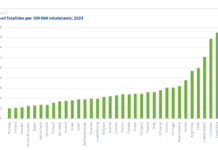Digitalization in public transport (DTP) refers to the use of technologies across the entire value chain of mobility, from planning and operations to user engagement. It enables better data collection, improved delivery service, and more informed decision-making. In the context of Mexico, where transportation generates around 25% of the country’s national greenhouse gas (GHG) emissions, digitalization also plays a crucial role in reducing environmental impacts and advancing sustainable development. A recent study by ITDP Mexico, supported by the Inter-American Development Bank (IDB), highlights how four major cities — Mexico City, Guadalajara, Mérida, and Monterrey — are adopting digital tools to modernize and integrate their transport systems to the benefit of both operators and users. Drawing from extensive research and interviews, the study outlines several key lessons, challenges, and policy recommendations to support cities in building more efficient, sustainable, and forward-thinking mobility systems.
The post Digitalization in Public Transport: Lessons from Mexico’s Cities first appeared on Institute for Transportation and Development Policy.









